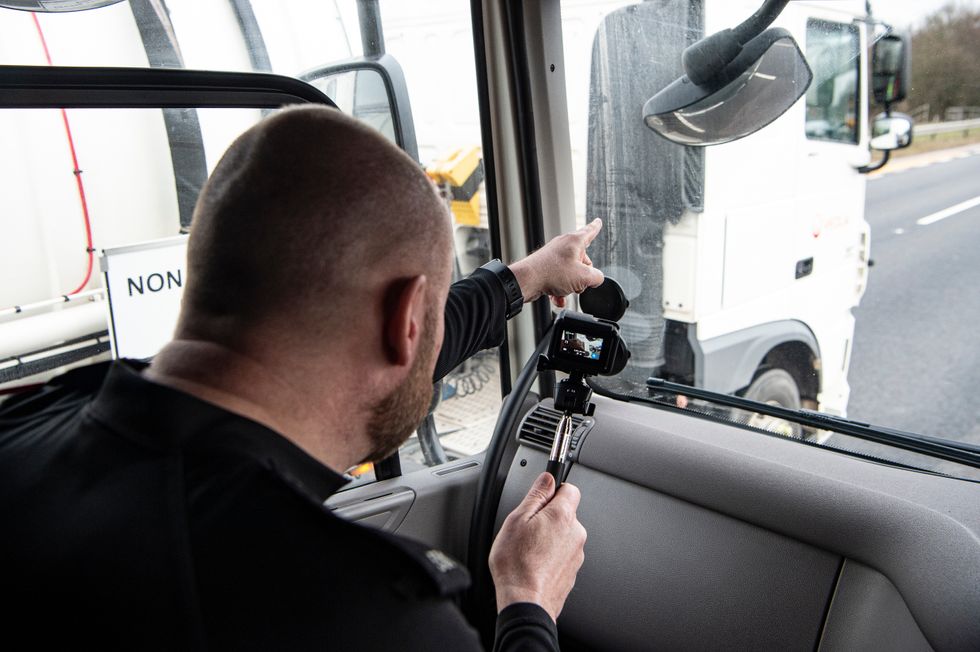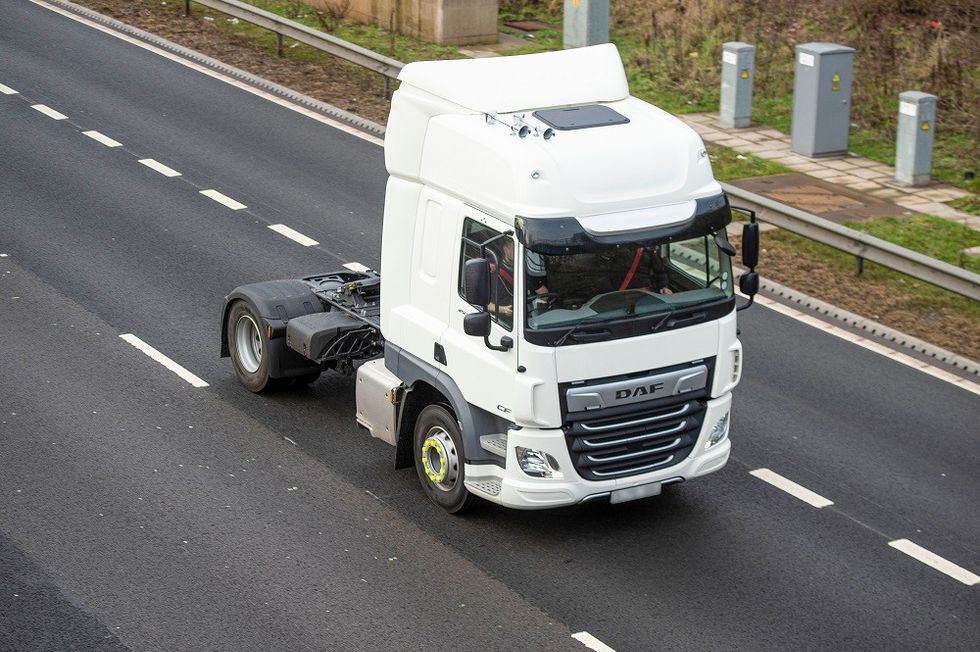Drivers caught breaking the Highway Code can be fined £200 under UK law
Don't Miss
Most Read
Trending on GB News
Undercover police officers using HGV cabs have spotted more than 51,500 driving offences on UK roads, with thousands of motorists slapped with hefty fines.
Operation Tramline, which marked its 10th anniversary this month, has seen officers from 35 different police forces patrolling across the country in elevated cabs catching drivers breaking the Highway Code and other offences.
The safety campaign began as a trial to find new ways to deter unsafe driving, with the first unmarked HGV cab going out on patrol with police a decade ago.
Since then, police have racked up some 13,000 hours patrolling in the unmarked vehicles since the operation began, with shocking footage showing drivers ignoring the rules.
Do you have a story you'd like to share? Get in touch by emailingmotoring@gbnews.uk

Police have been using HGV cabs for over 10 years to spot rulebreakers on UK roads
NATIONAL HIGHWAYS
The most common offences recorded over the past decade were for drivers not wearing seatbelts (14,861) and using a mobile phone while behind the wheel (13,553), which breaks rule 99 and rule 149 of the Highway Code, respectively.
Together, these offences make up more than half (54 per cent) of the total number of offences recorded by police between 2015 and 2024. Statistics found that people not wearing a seatbelt are twice as likely to die in a collision.
Motorists can also be four times more likely to be in a crash if using a mobile phone while driving. Under UK law, drivers caught on their phone can be fined £200 as well as slapped with six penalty points.
National Highways director of road safety, Sheena Hague, said: "We know that driver distraction, such as using a mobile phone, and not wearing a seatbelt are key factors in collisions which result in people being seriously injured or killed on our roads."
She explained that the goal of Operation Tramline has always been to "remind motorists to think carefully about their driving behaviours behind the wheel".
She shared: "The choices people make can have such a devastating and far-reaching impact on people's lives.
"It is disappointing that there are still a minority of people who continue to put themselves and others at risk, and we will continue working with the police through Operation Tramline and other campaigns to deter unsafe driving."
Meanwhile, Future Roads Minister Lilian Greenwood detailed how "dangerous driving puts everyone on our roads in danger", with Operation Tramline playing a vital role in tackling this issue.
Department for Transport Road casualty statistics revealed that, based on data for 2018 to 2022, 24 per cent of car occupant fatalities were not wearing a seatbelt.
Chief Constable Jo Shiner, the National Police Chiefs' Council lead for roads policing, warned that driving while distracted is "incredibly dangerous and selfish, putting many lives at risk and, as the statistics show, it can all too often end in tragedy".
"The results from Operation Tramline speak for themselves in showing just how valuable it is and how the perspective from the truck cab enhances officers' view of the road," Shiner added.
Data from the operation shows that of the vehicles stopped, 40 per cent were HGVs, 30 per cent were vans and 30 per cent were cars. The unmarked HGV cab is driven by a trained officer with at least one "spotter" who identifies and records offences.
LATEST DEVELOPMENTS:
- Elon Musk's net worth drops below $300billion as Tesla Takedown protests rage on - 'They want to kill me'
- Vauxhall's Luton plant receives huge update after Stellantis closed factory and put 1,100 jobs at risk
- Electric car drivers to benefit from 'largest ever' rollout of on-street EV chargers - 'Huge moment'

The unmarked HGVs have recorded more than 51,000 cases of driving offences on UK roads
WARWICKSHIRE POLICERule 99 of the Highway Code states: "You MUST wear a seat belt in cars, vans and other goods vehicles if one is fitted. Adults and children aged 14 years and over MUST use a seat belt or child restraint, where fitted, when seated in minibuses, buses and coaches."









